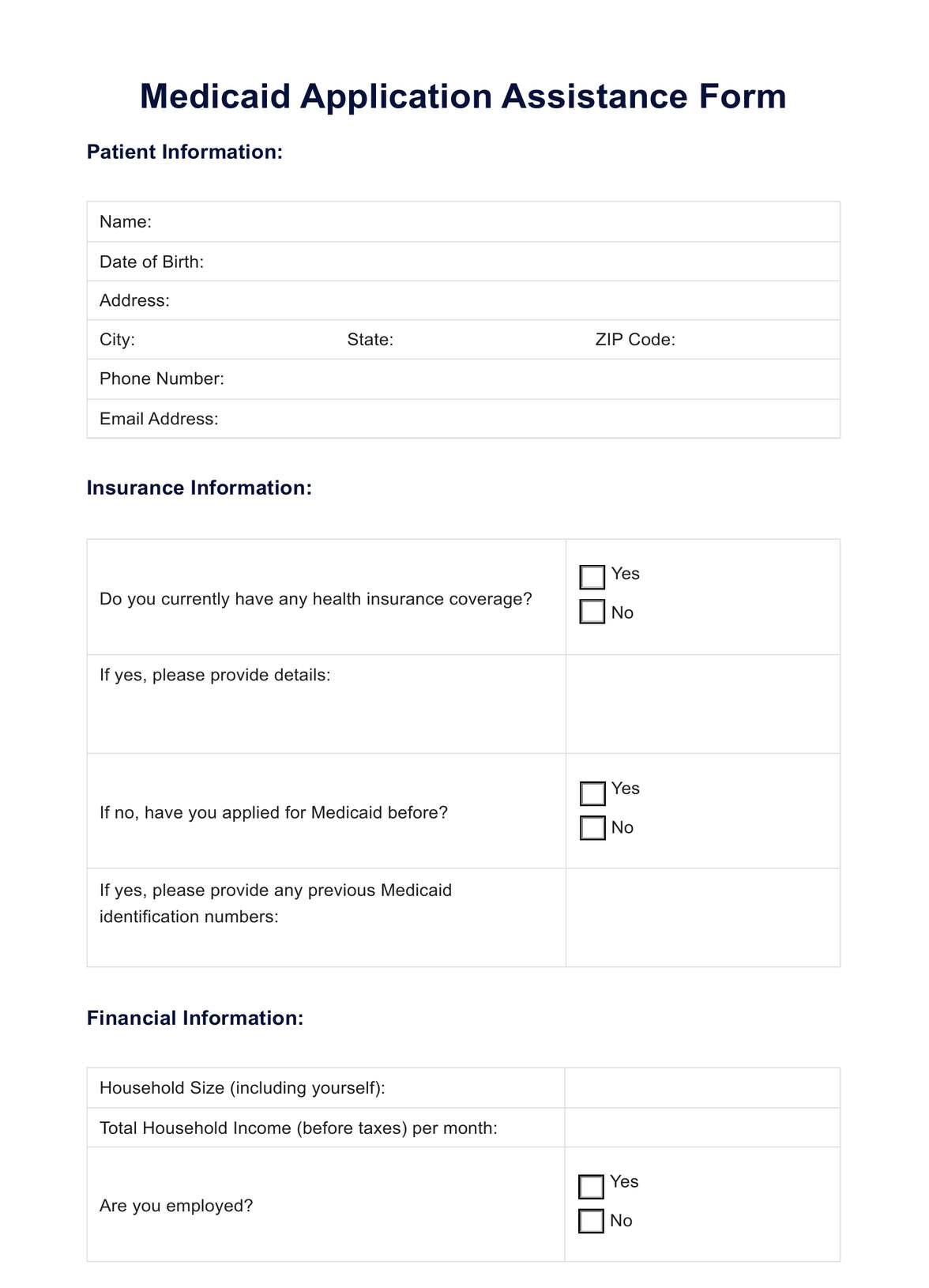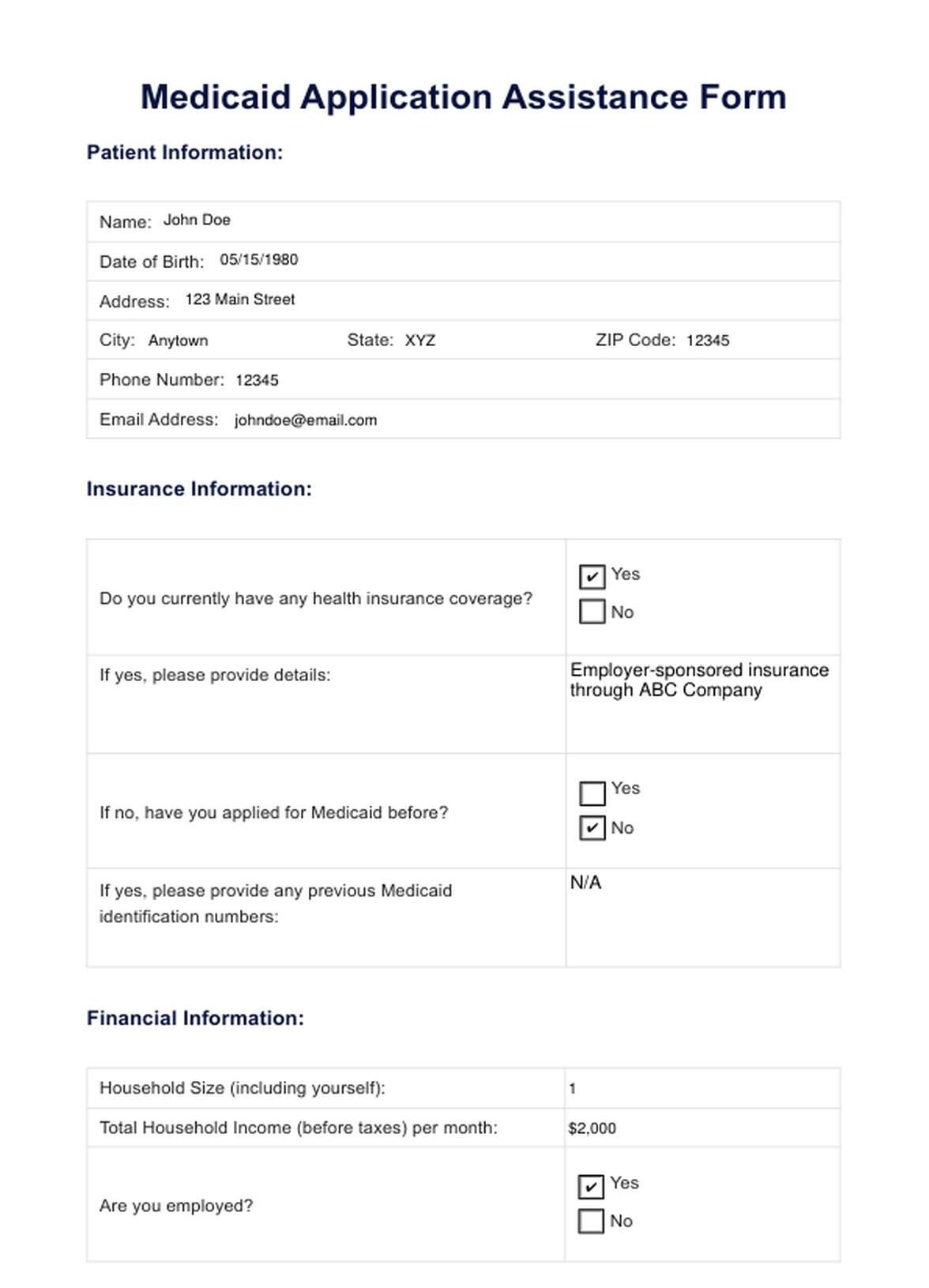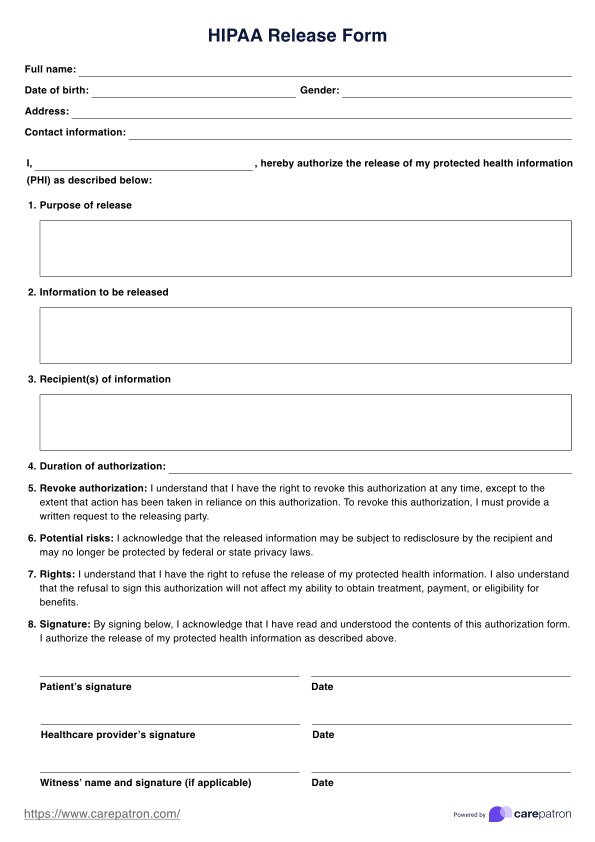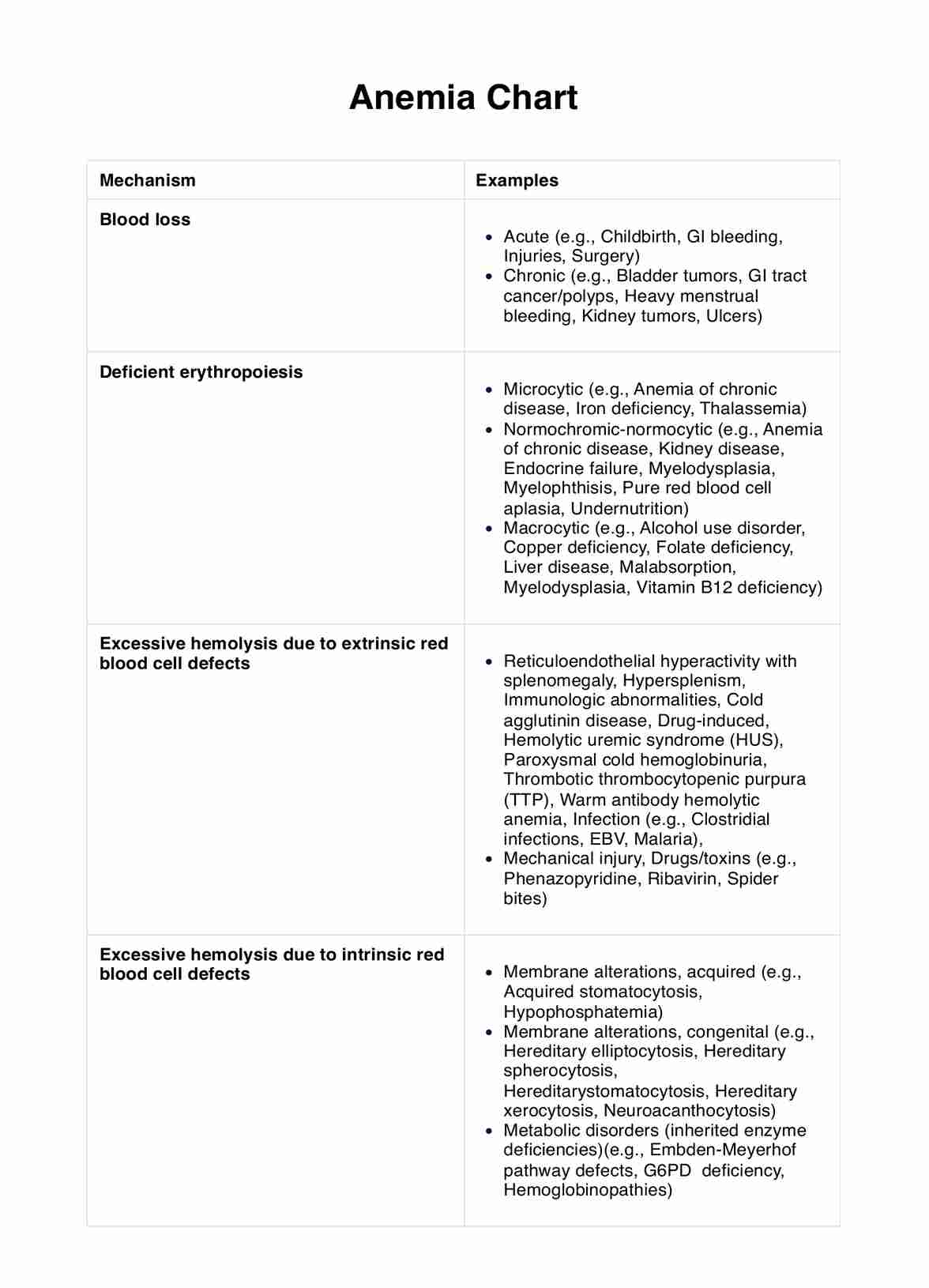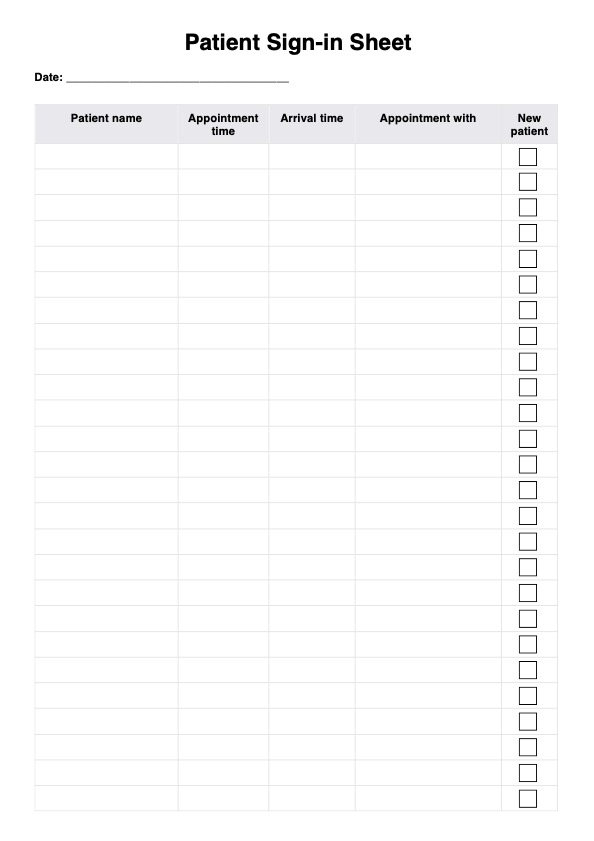Medicaid Application Form
Discover how to navigate the Medicaid application process effectively with our comprehensive guide on completing the Medicaid Application Form.


What is a Medicaid Application Form?
A Medicaid Application Form is a document used to apply for Medicaid, a government program that provides health coverage to eligible individuals and families with low income and limited resources. This form collects protected health information and other personal details necessary to determine eligibility for Medicaid benefits, including long-term care services.
The form may be available on paper for those who prefer to apply offline. It typically requires detailed information about the applicant, family, income, assets, and other relevant factors. Additional information or forms, such as proof of income, residency, or citizenship, may be requested to support the application.
Medicaid programs often offer assistance to children, families, parents, individuals with disabilities, and older adults in need of healthcare support. Completing the application form may require careful review and verification of the provided data to ensure accuracy.
Medicaid eligibility requirements differ by state and program and may consider factors like income, age, and disability. Applicants can submit forms for review and receive notice of coverage. Online applications may be available in some states.
Medicaid Application Form Template
Medicaid Application Form Example
Who is eligible to apply for Medicaid using this form?
Individuals who meet specific criteria related to income, assets, age, disability, citizenship, and other factors may be eligible to apply for Medicaid using the Medicaid Application Form. Eligibility requirements vary by state and program, but generally, the following people or groups of people may qualify for Medicaid coverage:
- Low-income individuals and families: Those whose income falls below a certain threshold set by the state may qualify for Medicaid coverage.
- Children and pregnant women: Medicaid often provides coverage for children from low-income families and pregnant women who meet income requirements.
- Parents and caretaker relatives: Some states offer Medicaid coverage to parents and caretaker relatives who meet income and other eligibility criteria.
- Older adults and individuals with disabilities: Medicaid may provide coverage for older adults (seniors) and individuals with disabilities who meet specific requirements, including income and asset limits.
- Individuals needing long-term care: Medicaid may cover long-term care services for eligible individuals who require assistance with activities of daily living due to age, disability, or medical condition.
- Individuals receiving supplemental security income (SSI): Some states automatically provide Medicaid coverage to individuals who receive SSI benefits.
- Other specific eligibility categories: Some states offer Medicaid coverage to additional groups, such as individuals receiving foster care or adoption assistance, certain veterans, and those needing particular medical services.
It's important to note that eligibility criteria vary widely by state, so parents and individuals interested in applying for Medicaid should check with their state's Medicaid agency or visit their official website to determine their eligibility and access the appropriate application forms.
What documents and information are required to complete the Medicaid Application Form?
The documents and information required to complete the Medicaid Application Form can vary depending on the state and individual circumstances. However, standard documentation and information typically needed to complete the paper application form may include:
Personal information:
- Full legal name
- Date of birth
- Social Security number
- Address (current and previous)
- Phone number
- Email address (if applicable)
- Citizenship or immigration status
Household information:
- Information about household members, including spouses, children, and dependents
- Household income (from employment, self-employment, alimony, pensions, Social Security benefits, etc.)
Financial information:
- Bank statements
- Pay stubs or income verification documents
- Tax returns or W-2 forms
- Proof of assets (e.g., property, vehicles, savings, investments)
Health insurance information:
- Details about current health insurance coverage, if any
- Policy numbers
- Insurance provider information
Disability information:
- Documentation of disabilities, if applicable
- Proof of eligibility for disability benefits (e.g., Social Security Disability Insurance)
Long-term care needs:
- Information about any need for long-term care services, if applicable
- Documentation of medical conditions or disabilities requiring long-term care
Additional documents:
- Proof of residency (e.g., utility bills, lease agreements)
- Proof of citizenship or immigration status (e.g., birth certificate, passport, green card)
- Any other documentation requested by the Medicaid agency to verify eligibility
It's essential for applicants to carefully review the Medicaid Application Form instructions provided by their state's Medicaid agency and gather all required documents and information before completing the completed form. Additionally, individuals may seek assistance from Medicaid caseworkers, community organizations, or healthcare providers if they need help understanding the application process or gathering necessary documentation.
Are there different versions of the application form for other states or regions?
Yes, there are typically different versions of the Medicaid Application Form for other states or regions within the United States. Each state administers its own Medicaid program, and while the basic structure and requirements for Medicaid eligibility are set at the federal level, states have flexibility in designing and implementing their Medicaid programs. As a result, the specific application form, eligibility criteria, documentation requirements, and processes may vary from state to state.
States may customize their Medicaid application forms to align with their specific Medicaid program rules, regulations, and eligibility criteria. Additionally, states may have variations in terminology, income thresholds, and additional requirements based on demographics, healthcare needs, and state policies.
To apply for Medicaid, use the form specific to your state and follow the instructions provided by your state's Medicaid agency. You can access the form and related information on the agency's website or by contacting them directly.
How long does processing a Medicaid application submitted via this form typically take?
The processing time for a Medicaid application submitted via the provided form can vary depending on several factors, including the state's Medicaid program policies, the completeness and accuracy of the application, the volume of applications being processed, and any additional verification or documentation required.
Medicaid agencies generally strive to process applications as efficiently as possible to ensure timely access to healthcare coverage for eligible individuals and families. However, processing times can sometimes range from several weeks to several months.
States may have expedited waiver processing for some groups, like pregnant women or those with urgent medical needs. If you don't get a determination on your Medicaid application within a reasonable timeframe, follow up with your state's Medicaid agency and provide the requested information promptly.
Can I apply for multiple family members using a single application form?
Yes, in many cases, you can apply for multiple family members using a single Medicaid Application Form. This allows for a more streamlined application process, especially for households with numerous individuals seeking Medicaid coverage. The application form typically includes sections where you can provide information about all household members applying for Medicaid benefits.
When completing the application form, you'll need to provide personal information for each family member, including their full legal name, date of birth, Social Security number, and other relevant details. Additionally, you may need to provide information about each individual's income, assets, health insurance coverage, and any specific healthcare needs.
It's essential to ensure that the information provided for each family member you requested is accurate and complete to help process the application. If each family member has different eligibility criteria or circumstances, you may need to provide additional documentation or information to support their applications.
What is the notification process after submitting the Medicaid Application Form?
After submitting the Medicaid Application Form, the notification process typically involves several steps to inform applicants of the status of their application and whether they have been approved for Medicaid coverage. The specific notification process can vary by state, but it generally includes the following steps:
- Application receipt acknowledgment: Once the Medicaid agency receives the application form, they may send an acknowledgment to confirm receipt. This acknowledgment may include information about the expected timeline for processing the application and any additional steps that may be required.
- Application review: Medicaid agency staff will review the application form and any supporting documentation provided by the applicant to determine eligibility for Medicaid coverage. This review process may involve verifying income, assets, residency, citizenship, and other eligibility criteria.
- Request for additional information: If additional information or documentation is needed to complete the application review process, the Medicaid agency may send a request to the applicant. This request will typically specify the required information and provide instructions on submitting it.
- Eligibility determination: Once the application review is complete and all required information has been provided, the Medicaid agency will determine the applicant's eligibility for Medicaid coverage. If approved, the applicant will receive notification of their eligibility status.
- Notice of decision: The Medicaid agency will send a formal notice informing the applicant of the decision on their Medicaid application. If approved, the notice will include details about the coverage period, benefits, and other relevant information. If denied, the notice will explain the reason for the denial and provide information about the applicant's right to appeal the decision.
- Enrollment in Medicaid coverage: Upon approval of the application, eligible individuals will be enrolled in Medicaid coverage and receive information about accessing healthcare services through the Medicaid program.
Commonly asked questions
Approval times for Medicaid can vary widely depending on factors such as the state's processing backlog and the age and completeness of the application, but typically range from a few weeks to several months.
The maximum income limit to qualify for Medicaid varies by state and household size, with some states offering coverage to individuals and families with incomes up to 138% of the federal poverty level or higher.
Determining the "best" state Medicaid program can be subjective and depends on coverage options, provider networks, and healthcare accessibility. States like Massachusetts, Minnesota, and Hawaii have often been recognized for their comprehensive Medicaid programs.
Generally, you can apply for Medicaid coverage at any time throughout the year, as there is no specific enrollment period. However, certain life events, such as losing other health coverage or changing income or family size, may qualify you for a particular enrollment period.


